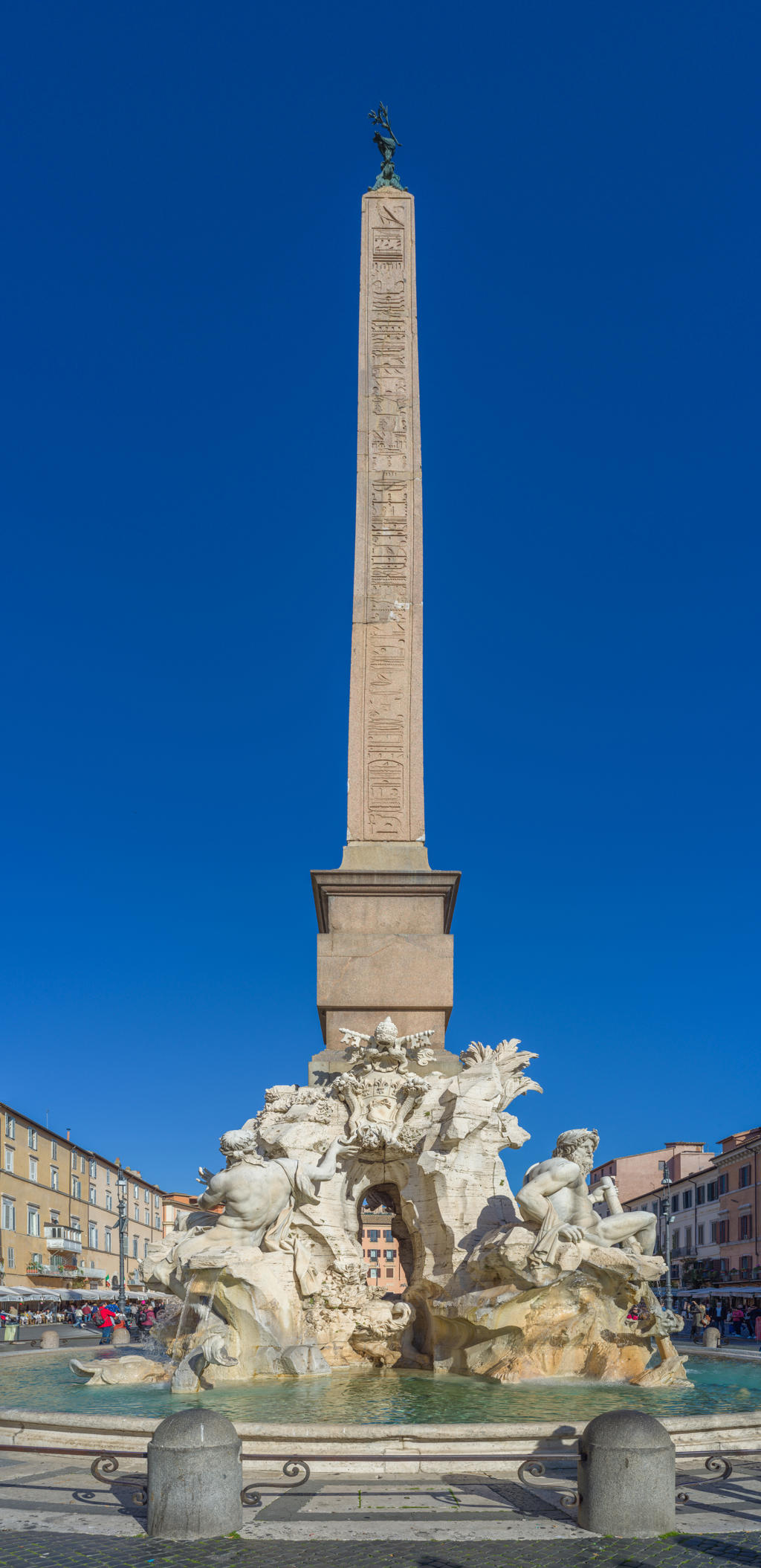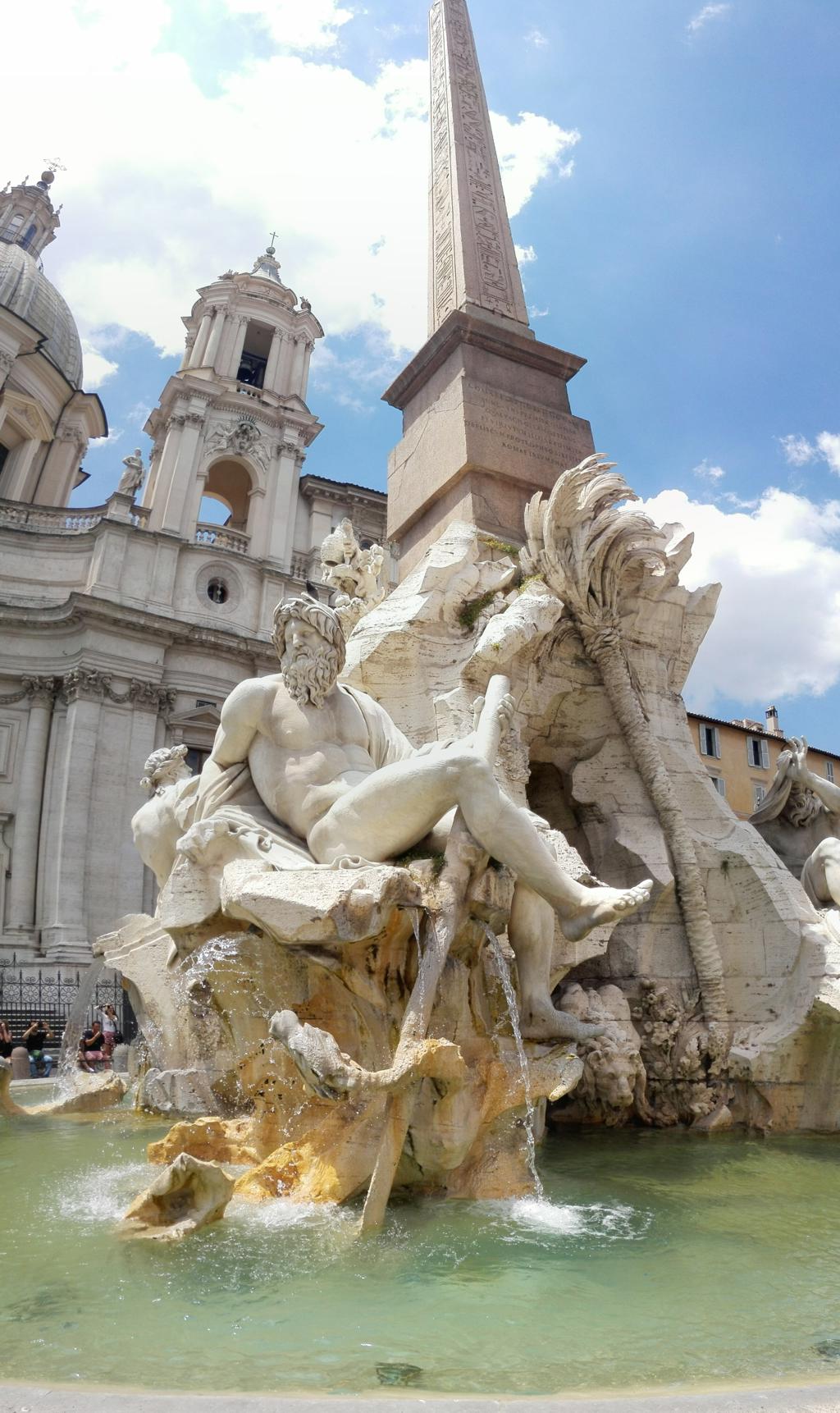About Fountain of the Four Rivers
The Fountain of the Four Rivers, a masterpiece by Gian Lorenzo Bernini, dominates the center of Piazza Navona with its dramatic and dynamic composition. Four colossal river gods recline around a towering obelisk, each representing one of the great rivers of the four continents known at the time of its creation in 1651. The Danube, Ganges, Nile, and Rio de la Plata are personified in stone, each figure exuding a distinct personality and cultural symbolism. The obelisk, originally from the Circus of Maxentius, rises majestically from the center, symbolizing the unity of the world under the papal authority of Pope Innocent X, who commissioned the fountain.
This baroque fountain is not just a celebration of the rivers but a testament to the artistic and political ambitions of 17th-century Rome. Bernini’s work reflects the power and reach of the Catholic Church, with the obelisk serving as a symbol of divine and earthly power. The fountain’s location in Piazza Navona, a space that was once a Roman stadium, adds layers of historical significance, connecting the grandeur of ancient Rome with the baroque splendor of the papal city.
Right Where It Began
The Piazza Navona, where the fountain stands, was originally the site of the Stadium of Domitian, built in the 1st century AD for athletic contests. The elongated shape of the piazza mirrors the outline of the ancient stadium, and the fountain’s placement at its center marks the transformation of this space from a site of ancient sports to a showcase of baroque art and architecture. Bernini’s fountain, with its theatrical flair, captures the spirit of transformation and renewal that characterized Rome during the papal reign of Innocent X.
Plan your perfect trip to Rome with Travo! Download now and start exploring.
Marks of Time
The fountain’s intricate carvings and the weathered stone tell stories of centuries past. The figure of the Nile, with its head draped to signify the river’s unknown source at the time, speaks to the mysteries of the natural world that captivated the Renaissance and Baroque minds. The Rio de la Plata, depicted with a pile of coins, symbolizes the wealth of the Americas, reflecting the era’s exploration and colonization. These elements, carved with exquisite detail, have withstood the passage of time, continuing to convey the cultural and historical narratives of their era.
Stories in Stone
Each river god is surrounded by flora and fauna native to their respective regions, adding layers of storytelling to the fountain. The Danube is accompanied by a horse, symbolizing Europe’s strength and vitality. The Ganges, with a long oar, represents the river’s navigability and the spiritual journeys it inspires. These details, meticulously crafted by Bernini and his workshop, transform the fountain into a living tableau of the world’s diversity and interconnectedness, as understood in the 17th century.
Details That Speak
Notice the interplay of light and shadow across the fountain’s surface, a hallmark of Bernini’s genius. The dynamic poses of the river gods create a sense of movement, as if the figures are caught in a moment of divine revelation. The water, cascading from the rocks and flowing around the figures, adds to the illusion of life and motion. This interaction between sculpture and water exemplifies the baroque fascination with blending art and nature, creating a spectacle that captivates the senses.
Living History
Today, the Fountain of the Four Rivers remains a vibrant part of Rome’s cultural landscape. It draws visitors from around the world, who gather to admire its beauty and ponder its historical significance. The fountain serves as a reminder of Rome’s enduring legacy as a center of art, culture, and power. As people sit around the piazza, enjoying the lively atmosphere, the fountain continues to inspire awe and reflection, bridging the past with the present in the heart of the Eternal City.


Map loading...
Location
Piazza Navona, 00186, Rome
